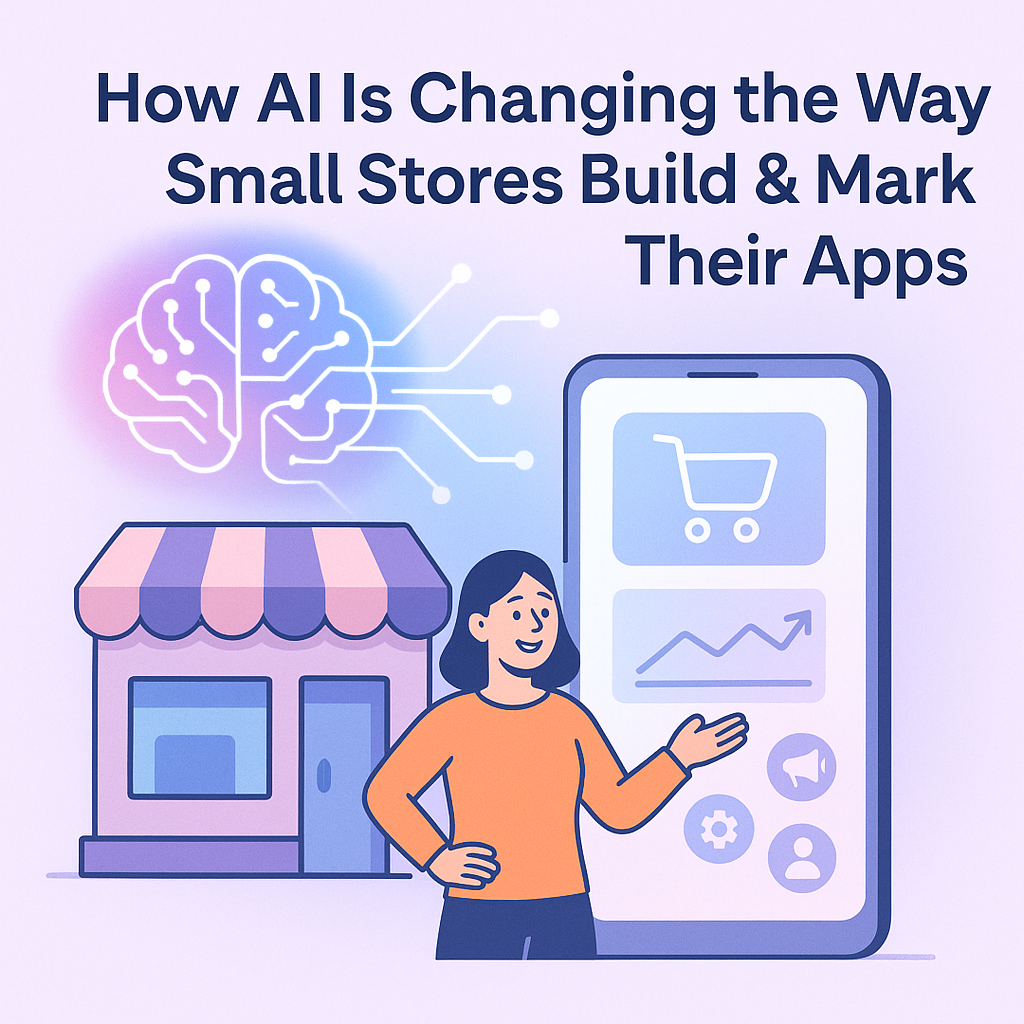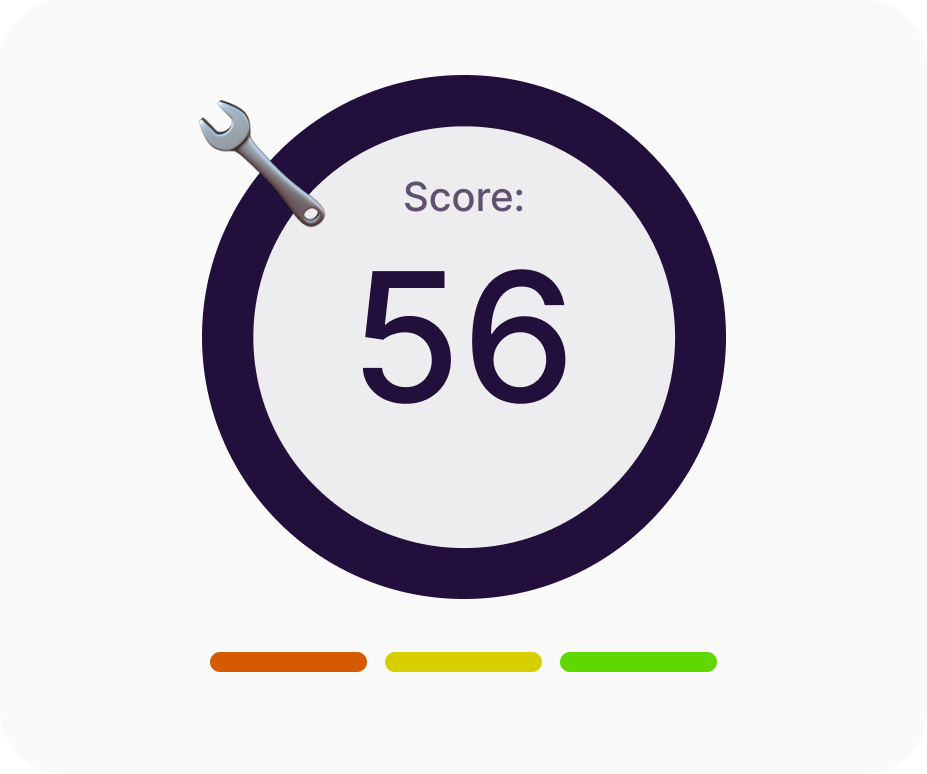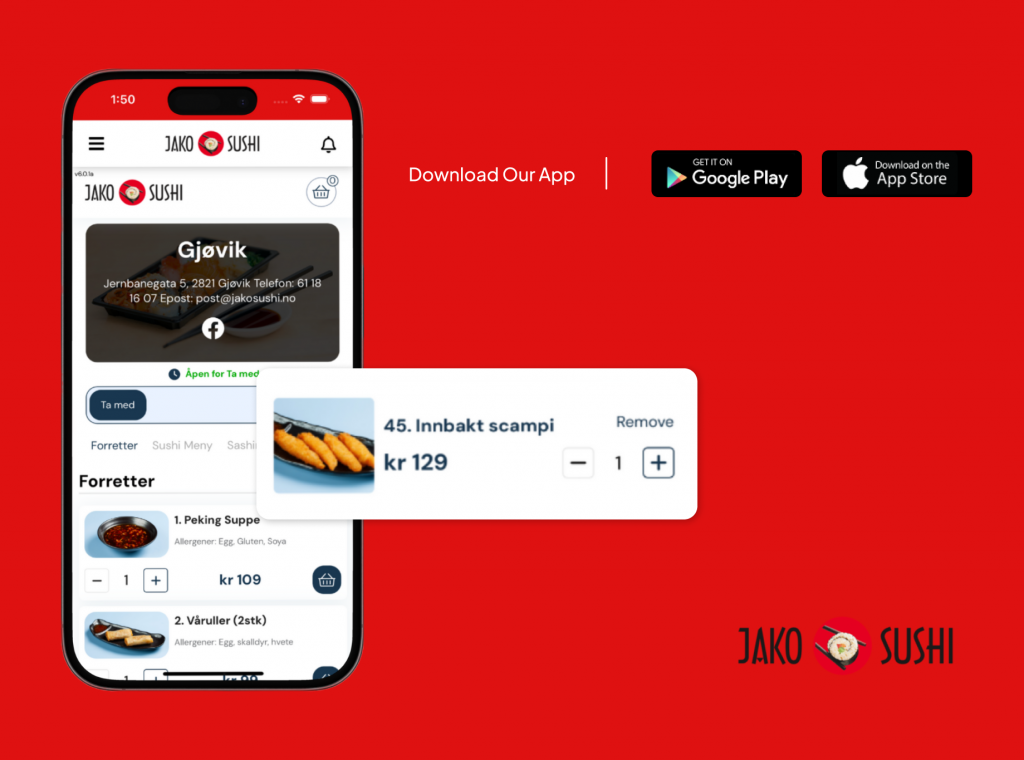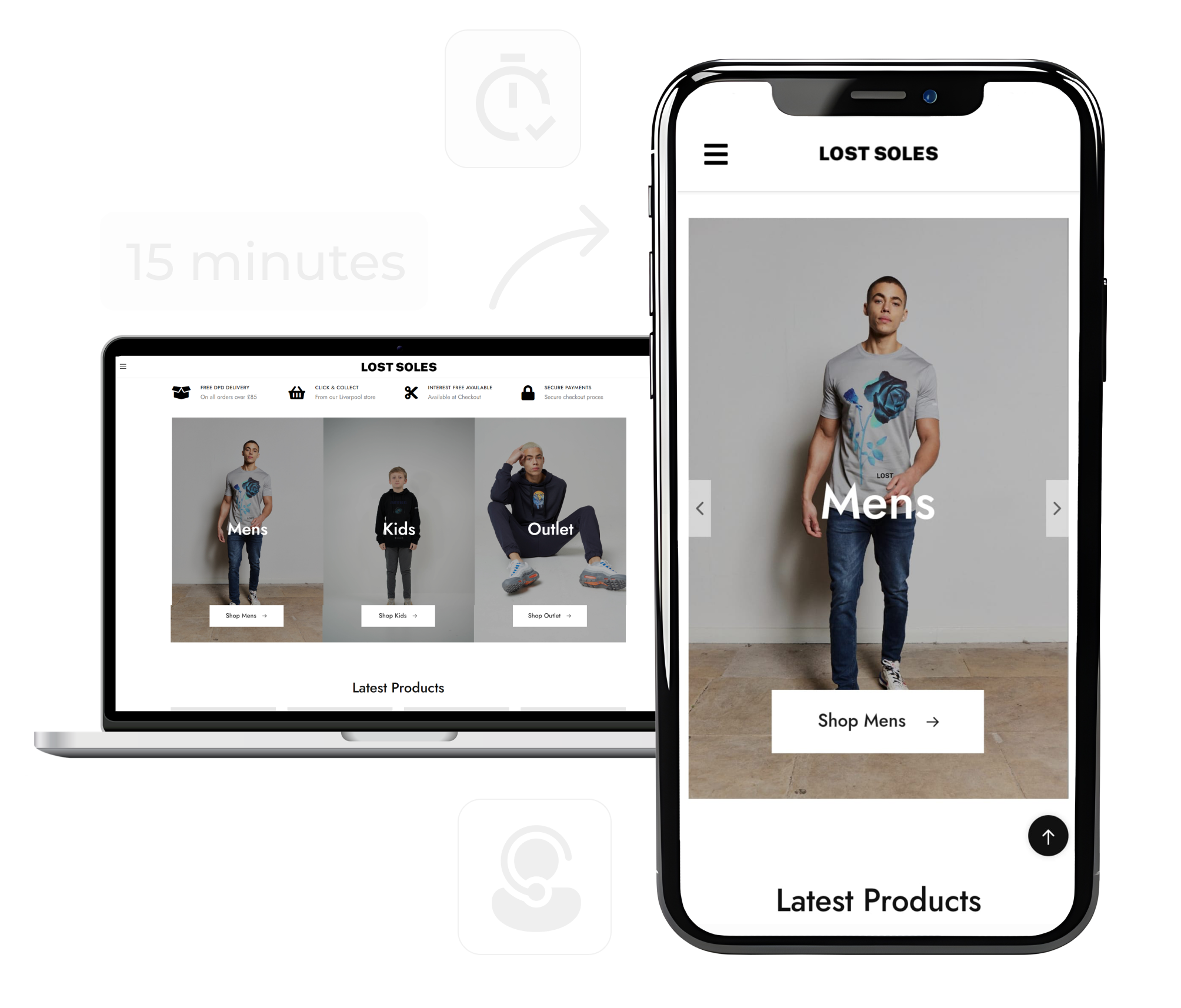
AI has shifted from novelty to production tool. For small e-stores, that shift shows up in two places:
Building: AI speeds scaffolding, wiring common services, generating tests, and drafting UI copy.
Marketing: AI scales ASO research, push/audience targeting, creative iteration, and lifecycle messaging.
But the winning teams aren’t replacing people with prompts. They’re combining ai app builder acceleration with full-service expertise on the difficult parts—integrations, performance, privacy, analytics, and publishing. That’s because the stakes on mobile are high: mobile commerce is projected to account for ~59% of all retail e-commerce sales in 2025 (about $4.01T), and mobile traffic already dominates many categories.
At the same time, the builder culture around AI and no-code is mainstream: 84% of developers are using or plan to use AI tools, and ~70% of new applications are expected to use low-code/no-code by 2025—proof that “build faster with assistive tooling” is the new normal.
This article maps what’s changing across the app lifecycle—build → publish → market → retain—and shows where to lean on automation, where to insist on expert delivery, and how small e-stores can turn these shifts into durable revenue rather than half-done tech debt.
Mobile share of e-commerce keeps climbing: best estimates peg 2025 m-commerce at ~59% of total online retail.
Mobile traffic exceeds 60% of all web traffic, 70%+ for e-commerce in many analyses.
AI adoption in product teams is now table stakes: 84% of devs are using or plan to use AI, with over half of pros using it daily; trust is mixed—another reason to keep human oversight.
Low-/no-code isn’t fringe: analysts consistently forecast ~70% of new apps on LCNC by 2025; citizen development is established.
Implication: The demand side (mobile shoppers) is already there. On the supply side (how you build), AI/LCNC lets small teams deliver more, faster—if they don’t skip the hard parts.
Instant scaffolds: Given a schema or prompt, an ai app maker can draft lists, detail screens, forms, and CRUD flows in minutes.
Integration first-passes: For common gateways (auth, payments) or storefront APIs, no code ai app builders can generate connectors—great for the first mile.
Automated testing: AI proposes unit/UI tests and synthetic data, shrinking bug-bash cycles before release.
Microcopy at scale: Onboarding tips, error messages, and push drafts for a mobile app with ai can be generated quickly, then curated by humans.
Advanced integrations (POS/ERP/tax/VAT rules, multi-warehouse fulfillment, refunds/partial captures) still need engineers who understand your constraints.
Performance budgets and cold-start control: AI won’t own your bundle size, memory, caching, image policy, or pagination—yet conversions depend on these.
Security/privacy: Token handling, consent flows, and PII storage must be correct and documented.
Store compliance: App Store/Play approval depends on precise, evolving rules; e.g., Apple requires account deletion inside the app for apps that support account creation. AI cannot negotiate policy with reviewers.
ShopApper’s standpoint: use ai app development to accelerate the repeatable work; use experts to engineer the risk areas. That’s the safest way for small stores to get speed and reliability.
DIY builds often wire the happy path but miss refunds, split tenders, loyalty accrual, multi-location inventory, or enterprise tax logic. Fixes are expensive when added late.
AI’s role: draft connectors and tests.
Expert role: finalize flows, add contract tests, and harden error states.
Common rejection causes on Google Play include broken functionality and policy violations; Apple flags privacy, performance, copycat designs, or missing features (like account deletion). Google blocked 2.28 million policy-violating apps in 2023 alone.
AI’s role: pre-submission checklists and text generation for privacy/metadata.
Expert role: map your app to current rulebooks, run a policy audit, and handle reviews back-and-forth.
If events aren’t planned up front, you can’t answer “what drove yesterday’s sales?”—and AI targeting will be guessing.
AI’s role: propose a baseline schema (e.g., ViewProduct, AddToCart, CheckoutStart, Purchase).
Expert role: align events with your funnel, set attribution, and validate data quality.
Autogenerated screens often over-render, ship large images, and skip caching—fine on a flagship iPhone, awful on mid-range Androids.
AI’s role: detect heavy components and propose optimizations.
Expert role: enforce budgets and test on realistic hardware.
With an ai app builder era, you can generate keyword sets, localized titles/subtitles, and screenshot captions quickly—and test more ideas. Humans still make the final brand/legal choices.
Models find micro-segments (lapsed high-AOV, frequent browsers, price-sensitive carts). But segmentation only works when instrumentation is clean (Section 3.3).
Push is still powerful when used responsibly. Shopping apps see average mobile push opt-in around ~36% (Android) and ~33% (iOS); many categories are higher, some lower—proof that the channel is viable for re-engagement and lifecycle nudges.
AI will happily generate an ocean of messages. Set frequency caps, enforce brand voice, and require human approval for campaigns hitting large segments.
Your ai in mobile apps surface is bigger than a chatbot:
Semantic search & collections: “black waterproof boots under $120” returns what a shopper actually meant.
Recommendations: lightweight models can run server-side or on device, improving with each interaction.
Assisted service: order status, re-order, address updates via chat—human takeover for edge cases.
Dynamic merchandising: home feed that adapts to time of day, weather, or purchase history.
These features convert better when the basics (speed, pictures, copy, return policy) are solid. AI enhances a good store; it can’t rescue a confusing one.
Here’s how the lifecycle plays out when you combine AI acceleration with full-service delivery.
AI drafts screens, tests, and starter copy.
Experts finalize auth, payments, product data sync, tax/ship rules, and analytics.
You emerge with a production-grade mobile app with ai features where they truly help.
Policy checks up front (privacy labels, data-safety forms, account deletion, billing rules).
Performance budgets enforced before submission.
Metadata & ASO supported by AI, signed off by humans.
ASO experiments for rank coverage.
Push & in-app journeys that provide value (early access, re-order, back-in-stock).
Predictive nudges to reduce churn—but never at the cost of trust.
Track D1/D7/D30 retention, purchase conversion, push-open → purchase, AOV.
AI proposes tests; humans prioritize the ones that move gross margin.
Yes, no code app builder options are compelling at signup price. The hidden costs emerge later:
Integration rescue (POS/ERP/tax compliance)
Policy overturns after rejection
Performance rework when activity spikes
Security/privacy remediations if consent or token flows were wrong
Analyst and industry tallies regularly show professional builds ranging widely (often $80k–$250k+, integration-dependent) while “simple app” blog posts quote $5k–$50k but exclude publishing/maintenance details. Google Play alone prevented 2.28M policy-violating apps in 2023—evidence that “nearly done” isn’t done.
ShopApper’s POV: we combine automation with a full-service team. You still benefit from AI speed, but we own the outcomes that DIY builders can’t: clean integrations, performance, analytics, and store approvals.
| Item / Risk Area | DIY with no code app builder / no code application development | Full-service (ShopApper-style) |
|---|---|---|
| Up-front build | Low–moderate (licenses + internal time) | Moderate (bundled into plan) |
| Integrations (POS, ERP, custom) | Often partial; risk of “half-done” work | Engineered end-to-end, tested |
| Publishing | Higher rejection risk; longer back-and-forth | Handled by team |
| Performance budgets | Best-effort; often untracked | Defined and enforced |
| Security & privacy | Easy to misconfigure | Audited flows/compliance |
| Ongoing support | Community or limited vendor support | Dedicated support & updates |
| 12–24-month TCO | Can spike due to rework | Predictable, bundled |
Answer a few quick questions and get a custom report on your app potential, missed opportunities, and where to level up.

Food & Restaurant (delivery): Jako Sushi — 1220% ROI
A Norwegian sushi brand needed a fast app that integrated with its website and POS. ShopApper delivered a native app with flawless sync, performance optimization, and ongoing support. Result: 32% of orders now come from the app and a 1220% ROI within months. Push drives timely specials; frictionless checkout encourages repeat orders. (This aligns with category-level push opt-in rates, where Food & Drink performs well on iOS and Android.)

🗓️ Month 1 — Set the Foundation
Goal: Make sure buying from your phone is fast, simple, and measurable.
✅ Fix these first:
Pages load in under 2 seconds.
Buttons big enough to tap.
Short checkout (name + payment + address only).
Apple / Google Pay enabled.
Reviews and returns visible.
📊 Start tracking:
Set up basic analytics for: View → Add to Cart → Checkout → Purchase.
You’ll soon see where people drop off.
💡 Decide your path:
No-code / AI app builder: fastest and cheapest test, but limited.
Full-service + AI help (ShopApper): a little slower, far safer if you need POS, tax, or multi-store features.
🛠️ Month 2 — Build What Buyers Actually Use
Goal: Ship the essentials: browse → cart → checkout.
🎯 Must-haves: Home, categories, product page, cart, checkout, order history, push notifications.
🧠 Use AI smartly:
Let it create first-draft screens, text, and tests.
Have experts wire payments, shipping/tax, and inventory sync.
⚡ Test speed:
Open the app on a mid-range phone. If it lags, compress images and load fewer items at once.
🔒 Compliance:
Add privacy notice and in-app account deletion (Apple now requires it).
🚀 Month 3 — Publish, Promote, Measure
Goal: Get approved, drive first orders, and prove it works.
📝 Before submitting:
Check for broken links, missing text, or slow pages.
📣 On launch:
Add “Get the App” banners and QR codes.
Send only valuable pushes—early access, back-in-stock, quick reorder.
📈 Track simple results:
| Metric | Target | Fix if low |
|---|---|---|
| App vs Web conversion | Equal or higher | Simplify checkout, add wallets |
| Push opt-in | 30 % + | Ask later, explain value |
| Purchases from push | Steady weekly sales | Fewer, better messages |
✅ After Launch
Add loyalty or wishlists once core sales grow.
Use AI for product copy and analytics—not for money or privacy flows.
Keep your app light and updated every quarter.
We believe in AI with experts. We use automation to move faster—UI scaffolds, tests, copy suggestions—then engineer the hard parts: integrations that don’t break on refunds, performance that holds during promos, privacy that passes inspection, analytics you can trust, and publishing that clears on the first pass more often.
This is how you leverage the ai app builder era without inheriting a half-done app that’s expensive to fix later.
AI changed how small stores build and market apps: faster starts, wider experiments, smarter targeting. It didn’t change why customers buy: speed, clarity, trust, and value. Winning teams mix ai app creator efficiencies with expert delivery where quality and compliance decide revenue. Do that, and 2025’s mobile reality—where most e-commerce happens on phones—becomes your competitive advantage.
Take the first step toward an app for your online store. Schedule your free call and see how easy it is to get started with a full-service solution like ShopApper.

Features
Start By Industry



I’m Ece, your Account Manager. I’m eager to learn about your business and assist you in achieving your goals.
Please share some info about your business so I can be fully prepared to answer your queries. I’ll reply within 15-20 minutes. Thanks! ![]()